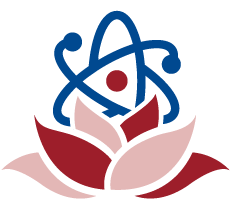Overall approach
Our six-year curriculum promotes learning the basics of neuroscience and cognitive science in the context of the monastic life. In many ways, core concerns of the neurosciences speak to those of monastics following the Buddhist path of rigorous, systematic practices of internal examination for attainment of enlightened body, speech, and mind, or “right view”. The unique nature of this project allows us also to search for and cultivate areas where Buddhism and cognitive science complement, contest, enhance our understanding of the mind. In this light, we chose topics in neuroscience and cognitive science that are relevant to both the core concepts in neuroscience and the interests of Buddhist monastics.
The Neuroscience curriculum draws upon what the monastics will learn in the other areas, especially from the Life Sciences and Philosophy of Science curricula, and deepens their understanding of both the scientific method and the findings from the neurosciences. Our goal is to benefit their monastic pursuits throughout their careers, and to build the grounds for fruitful exchange between western science and Buddhism in the service of humanity.
Selected topics
Neuroscience and cognitive science (here termed neuroscience) are evolving multidisciplinary endeavors that are both broad and deep. Therefore, we chose to focus our curriculum on core concepts and specific phenomena that exemplify typical neural processing, emphasizing humans. We focus particularly on sensation and perception, starting from how sensory organs capture information from the external world, all the way through how that information is processed in different neural pathways in the brain, and ultimately how cognitive processes use and motor systems act on that information. This approach speaks to central aspects of Buddhist epistemology that offer detailed, inquiry- and practice-based accounts of perception and experience.
Experiential / experimental context
Students learn best when they pursue questions that directly engage them. Group processes can amplify such learning, and we build on the advantage that monastics are extraordinarily adept at sharing and productively working in groups. Selected case studies and direct student engagement are used to scaffold student insight into processes of inquiry in the neurosciences, using exercises and projects done in teams. Like all sciences, neuroscience proceeds via hypothesis-driven questions. How do neuroscientists pose and investigate these questions? How do neuroscientists design experiments to test those questions? What kinds of data can we collect? And how do we evaluate and interpret those data?
Lecture discussions of concepts and evidence are keyed to the overarching questions: “How do we know?” and “How does this advance human self understanding and action?” Related student activities progressively build understanding and facility with the scientific method, so that what begin as simple exercises become increasingly complex and substantive projects. As a result, the monastics will have develop their own hypotheses, designed experiments, carried them out, and analyzed their results on increasingly ambitious inquiries.
We propose to investigate the similarities and differences between neuroscience and Buddhism in several key discussions regarding the scientific method, including: What is the difference between correlation, and cause and effect? Can we find compatibility between science’s focus on measurable phenomena and Buddhism’s focus on existential or transcendent phenomena? What is the role of the self in the context of scientific experiments? Is it possible to prove that something is true? (We have learned that Buddhism and science differ markedly on this point.) If absolute proof is not possible, how can neuroscience build an adequate picture of sentience? Each year of the curriculum commences with a discussion around such questions, which then are woven into the content and student activities for that year. This process build cumulative conversations build on a growing mutual understanding.
Pedagogical approach
The Neuroscience curriculum will consist of both distance learning modules and in-person summer learning programs in India.
The distance learning component will facilitate monastics’ knowledge and understanding of neuroscience, as well as participation in debates and activities designed specifically for students to engage the material as a group. They will have the opportunity to propose questions periodically over the Internet to be answered by the ETSI Neuroscience team, and have access to a topic-driven discussion platform for students at all monasteries.
The distance learning modules consist of short, focused teachings on specific topics, to be followed in a sequential order to build a narrative as concepts are introduced. Each module will address a specific topic, discuss the big questions involved in that topic, propose questions for discussion or debate, and ask the monastics to develop their own big questions.
The summer program will complement the distance learning modules by holding conversations that go deeper into the topics introduced in the modules. Discussions will be interwoven with hands-on demonstrations of experiments, thorough teachings on the scientific method, and computer lab activities will advance the monastics’ understanding of how and why cognitive science investigates the mind, brain, and body.
